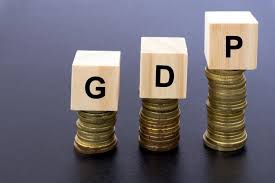New Delhi: India Ratings Wednesday lowered the country’s growth forecast to six-year low of 6.7 per cent for the current fiscal from an earlier estimate of 7.3 per cent on account of slowdown in consumption and moderation in industrial growth among other factors. This would be the third consecutive year of subdued growth, India Ratings principal economist Sunil Kumar Sinha said here.
Even on quarterly basis, he said, April-June is expected to be the fifth consecutive quarter of declining GDP growth at 5.7 per cent.
Citing factors for moderation in growth, he said, it is mainly due to five reasons including a slowdown in consumption demand and manufacturing and delayed, uneven progress of monsoon so far.
Besides, he said inability of Insolvency and Bankruptcy Code to resolve cases in a time-bound manner, and rising global trade tension adversely impacting exports are pulling down GDP numbers.
At this pace of growth, the target of $5 trillion by 2024-25 seems to be a far cry, he said, adding, there are enough calculation in public domain according to which the country needs to have a nominal GDP growth rate of 12 per cent to achieve that.
Given the past record, $5 trillion seems to be a conservative target, he added.
Sinha also said the recent measures to address some of the woes of auto, MSME and financial sectors announced by the government to revive the economy will take time to bear results.
These measures are likely to support growth only in the medium term, but the agency expects GDP growth to recover to 7.4 per cent in the second half of the fiscal mainly on account of the base effect.
Private consumption, which has been the mainstay of aggregate demand, has in fact come under pressure in urban as well as rural areas lately, he said.
“While the reduced income growth of households has taken the sting out of the urban consumption, drought/near-drought conditions in three of the past five years coupled with collapse of food prices has taken a heavy toll on rural consumption,” he said.
Even investment, particularly private corporate investment, has remained sluggish over the past few years. However, average investment growth, largely constituting government and corporate sector maintenance capex, at 9.2 per cent during 2016-17 to 2018-19 looks healthy vis-à-vis the average investment growth of 3.6 per cent during 2013-14 to 2015-16.
“Incremental or greenfield private corporate capex, although, is still missing. Since the major contributors to the economy’s investment pie are households (which include unorganised and unregistered enterprises (38.6 per cent), and private corporations at 37.9 per cent), their spending holds the key for reviving broad-based investment activity in the economy,” he said.
Given the stress in the real estate sector and manufacturing sector capacity utilisation hovering in 70-76 per cent range since 2013-14, Ind-Ra believes revival of private investment demand will be a long drawn process, he said.







































